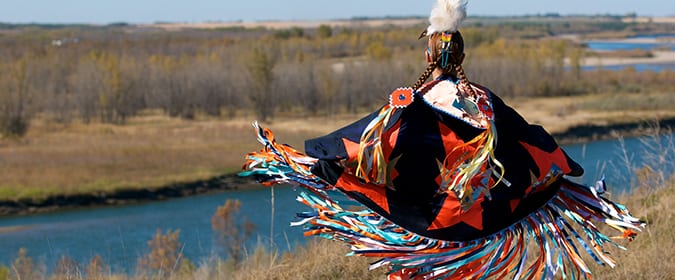
Native Americans living on tribal lands or reservations have and need local newspapers, just like the rest of our communities. Yet, they are often left out when discussing our audiences.
“Native and tribal media are vital voices in their communities,” said Tristan Ahtone, president of the Native American Journalists Association (NAJA) and tribal affairs editor for High Country News. “It’s important to be supportive of these outlets because they are often the only voice reporting on their communities.
Many Native Americans only see their communities in the news when something has gone wrong. “When you look at national media outlets and the types of stories they do about Indian Country, they typically fall into certain stereotypes,” Ahtone explained. “We see stories about drug and alcohol abuse fairly frequently [in non-native outlets]. Those are stories we (native outlets) don’t need to tell.”
Instead, like all good community reporters, editors of native publications focus on the everyday lives of their readers.
Samone Yuen is the editor of Wind River News, the paper that covers Wyoming’s Wind River Indian Reservation. When she first started reporting for the paper, her audience was pleasantly surprised to see the topics she chose to focus on.
“I had gone to the Fort Washakie school’s opening day and they had a ceremony with [music and hoop dancing], so I wrote it up as a nice, positive story (about the community),” Yuen said. “The next thing I hear, all the people that I interviewed at the school were singing my praises and saying they were so grateful that the Wind River News had a bright, positive front page for once.
“They’re doing excellent things [on the reservation],” Yuen added, “and I would be a poor journalist if I didn’t write about those things.”
Yuen says that while much of what she writes about the Wind River Indian Reservation isn’t going to make the national news, it doesn’t have to. “The reservation is my readership, and like any other group, they just want to know what’s going on in their community,” she explained.
Native communities benefit from reporters like Yuen who aren’t looking at them from the outside.
“If you’re there every day of the week reporting on what’s happening, you’re not just parachuting in; you’re part of the community,” Ahtone said.
That kind of local, on-the-ground reporting is what community news organizations are all about, regardless of whether they cover a small town or a reservation.
That doesn’t mean, however, that reporting about life on reservations should be left only to the local reporters. Ahtone wants to see more national and regional outlets take on the everyday reporting of life in Indian Country. Right now, High Country News is one of the only non-native publications to have a tribal affairs desk, but Ahtone would like to see more.
“I want to see general acceptance and weaving in of all sorts of indigenous journalism,” he said. “If you just throw a microphone into a house [on a reservation], you’ll come away with a cool story. There’s always someone out here doing something interesting.”
